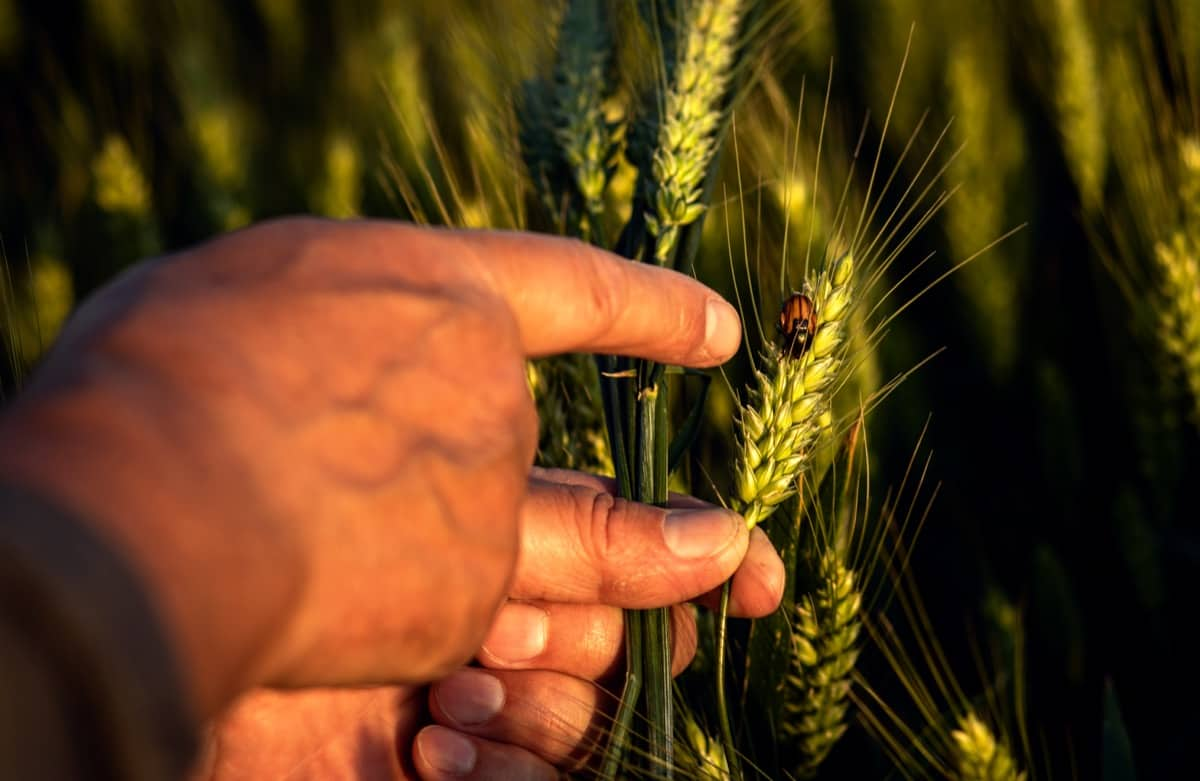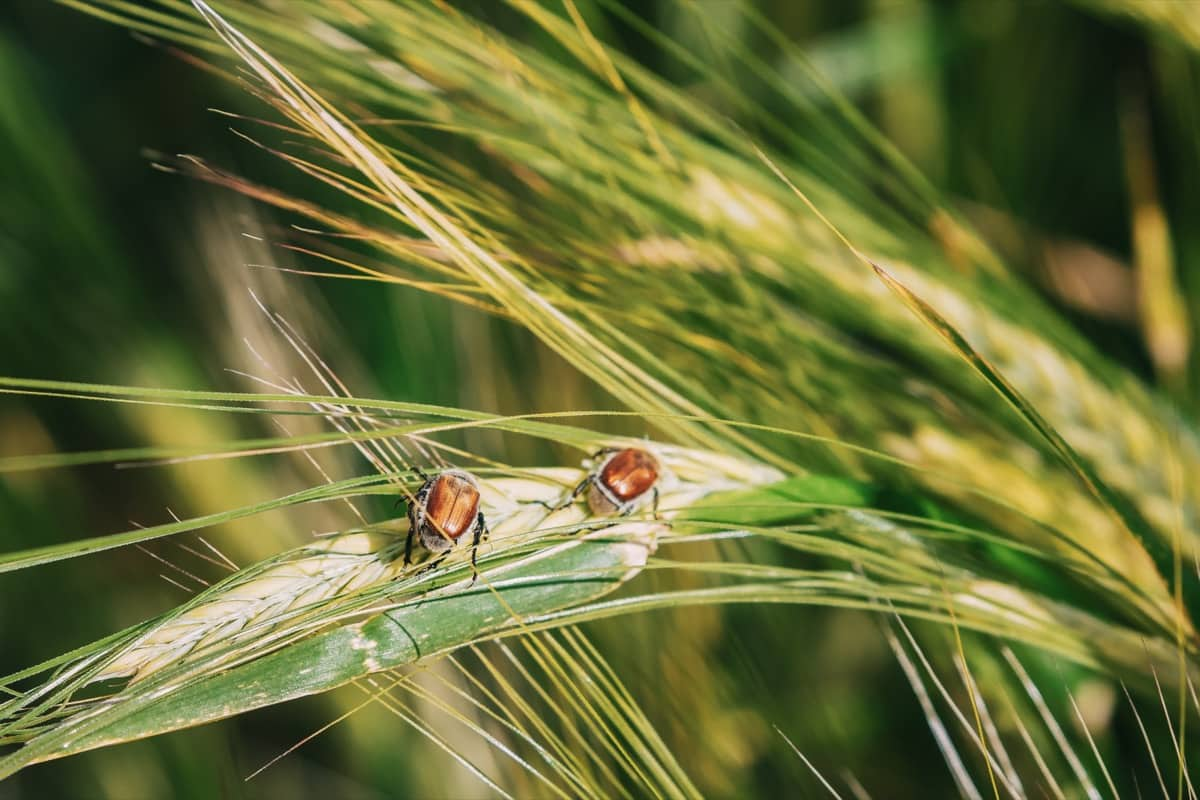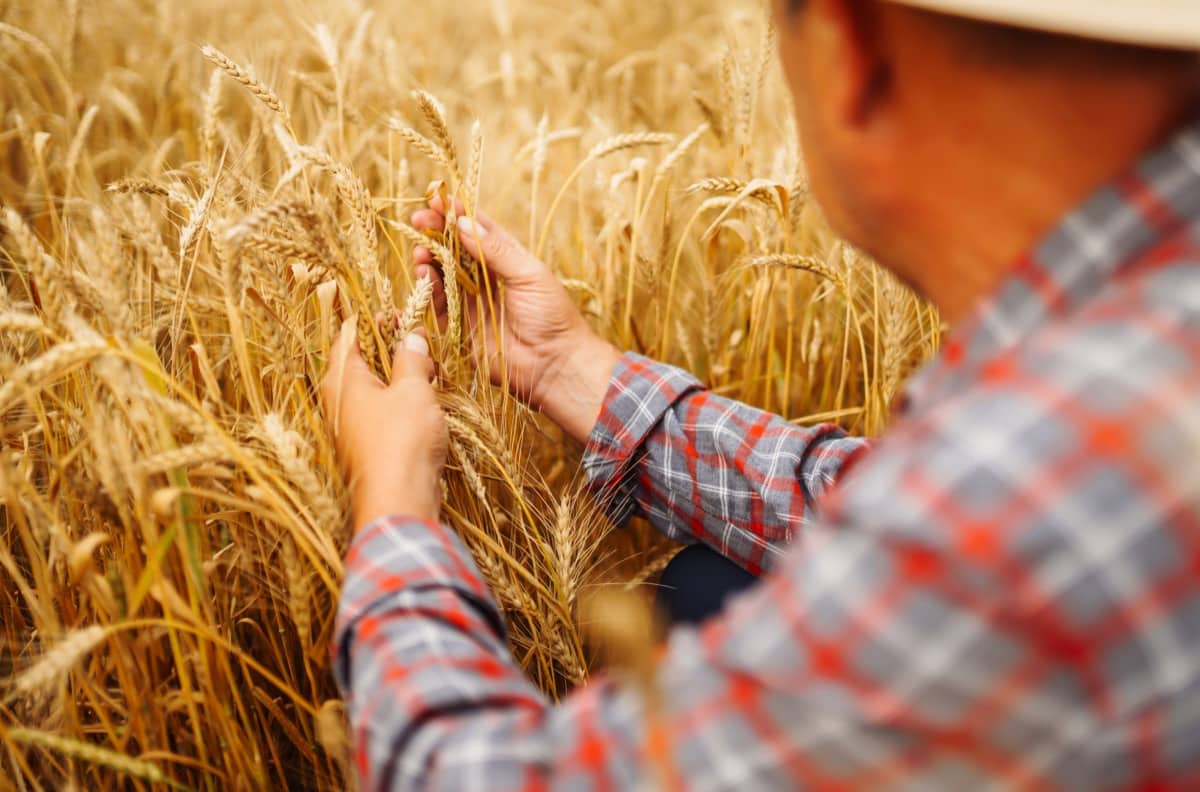Welcome to our comprehensive guide on managing pests in wheat crops. Wheat, a vital staple crop, is susceptible to various pests that can cause significant damage if left unchecked. In this blog, we will explore the common signs of pest infestation in wheat, delve into preventative measures to safeguard your crop and discuss effective treatment options.

How to Manage Pests in Wheat
Overview of Wheat Pests
Wheat, a widely cultivated grass, is a staple food worldwide. Belonging to the genus Triticum, the most commonly grown species is common wheat (T. aestivum). Evidence from archaeology suggests that wheat cultivation dates back to around 9600 BCE in the Fertile Crescent regions. Botanically, the wheat kernel is classified as a caryopsis, a type of fruit. Wheat surpassed all other food crops with a staggering land area of 220.4 million hectares (545 million acres) in 2014.
Additionally, the global wheat trade exceeds that of all other crops combined.is crucial in feeding approximately 35% of the global population. Although it hosts nearly twenty-four different insect species, only six of them—aphids, termites, armyworms, pink stem borers, pod borers, and Ghujhia weevils—attain the status of major pests. These pests pose a significant threat to wheat crops throughout their growth stages, from sowing to maturity. This chapter focuses on the distribution, host plants, identification, biology, and damaging symptoms caused by these insect pests.
Major and Common Damaging Pests in Wheat
- Termite: The two species of termites that pose a threat to wheat crops are Odontotermis obesus Rambur and Microtermes obesi Holmgren. These insects can cause major damage to the plants.
- Wheat Aphid: Sitobian avenae, commonly known as wheat aphid, is a major pest of wheat. These small insects feed on the sap of wheat plants, leading to stunted growth, yellowing leaves, and reduced yield.
- Armyworm/Cutworm: Mythimna separata Walker, also known as armyworm or cutworm, is a destructive pest that can quickly devastate wheat fields. Their voracious appetite results in defoliation and severe crop damage.
- American Pod Borer: Helicoverpa armigera Hubner, commonly called the American pod borer, is a serious threat to wheat crops. The larvae of this moth feed on developing pods, causing yield losses.
- Brown Mite: Petrobia latens Mull is a brown mite species that can infest wheat plants. These mites feed on the leaves, leading to discoloration, necrosis, and reduced photosynthesis.
- Pink Stem Borer: Sesamia inferens Walker is a major pest that attacks the stem of wheat plants. Infested stems exhibit characteristic pink discoloration, weakened structure, and reduced nutrient transport.
- Shootfly: Atherigona naqvii Steyskal and A. oryzae Mall are two species of shootflies that affect wheat crops. They lay eggs in the leaf sheaths, and the emerging larvae bore into the stem, causing “dead hearts” and yield loss.
Aphid Pests of Wheat and Their Management
Aphids Sitobion avenae, Rhopalosiphum padi, and other species are common aphids affecting wheat crops. They are found in wheat-growing areas, especially in the North-Western Plain Zone and Peninsular India. Infestation occurs from the second half of January until crop maturity.
In case you missed it: How to Manage Common Diseases in Wheat: Damage Symptoms, Treatment, Spread, and Prevention

Chemical pesticides can be used if aphid levels exceed 10 per tiller during the vegetative phase or 5 per tiller during the reproductive phase. Imidacloprid is a recommended insecticide, applied initially on border rows and then, if necessary, in the entire field. Natural enemies present in the field also help control aphid populations.
Brown Wheat Mite Pest of Wheat and Their Management
Brown wheat mites are prevalent in rainfed areas, particularly in Rajasthan, Haryana, and Madhya Pradesh. They cause damage by infesting leaves and sucking plant sap, resulting in silvery flecking on leaves. Individual mites are too small to be seen without effort but can be observed by shaking infested leaves on white paper. Mites usually do not pose significant production constraints, and management practices are optional. However, monitoring is essential to prevent them from becoming a major pest in changing cropping sequences.
Armyworm Pest of Wheat and Their Management
Armyworm (Mythimna separata): Armyworms are primarily found in the warmer climates of central India, with some presence in the northern plains. Larvae hide during the day and feed during the night or early morning. They may also feed during the day in wet and humid weather. They survive on subsequent crops like rice and persist in rice stubbles before the wheat crop is sown. This pest has gained attention in northern India under Rice-Wheat rotation, especially when rice stubbles/straw remain in the fields.
Legume Pod-borer Pest of Wheat and Their Management
Legume Pod-borer (Helicoverpa armigera): This polyphagous insect typically attacks legumes as a pod borer. However, it may also damage wheat ear heads when major hosts are unavailable during grain development. The economic harm this pest in wheat causes is typically below the threshold level. It is mostly found in northern and central parts of India, with wheat as a bridge host for its carryover.
Termites Pest of Wheat and Their Management
Termites (Odontotermis obesus, Microtermis obesi): Termites are prevalent in northern and central India, with some pockets in peninsular India. They attack wheat crops at various growth stages, from seedlings to maturity. Severely damaged plants appear wilted and dried, while partially damaged roots result in yellowing. Effective management involves the use of chemicals like endosulfan, chlorpyriphos, and carbosulfan, which can be applied as seed treatments or broadcast on treated soil in standing crops.
Integrated Pest Management of Insect Pests in the Wheat Crop
Termites: Cultural control methods Deep plowing fields during summer at 10-day intervals reduce the juvenile population. Apply well-rotted farmyard manure to discourage termite infestation. Avoid late sowing of crops. Use earthen pots or cow dung to deter termites. Remove crop residues that serve as sources of infestation. Use crude oil emulsion to destroy termite colonies. Mechanical control methods Dismantle termite mounds and eliminate the termite queen. Biological control methods Apply neem cake at recommended rates.
Pink Borer (leaf-eating caterpillar): Cultural control methods An erect bird perches to attract predatory birds. Biological control methods Conserve natural enemies. Chemical control method Use recommended insecticides at specified concentrations.
Shoot Fly: Cultural control methods Regular field monitoring and use of barrier crops. Plant tall border crops to reduce the pest population. Use fish meal traps for monitoring. Chemical control methods Apply recommended insecticides as per guidelines.
Brown Mte: Biological control methods Conserve natural enemies and use neem oil or NSKE. Chemical control methods Use recommended insecticides at specified concentrations.
Armyworm/Cutworm: Cultural control methods Regular field monitoring and use of barrier crops. Biological control methods Install pheromone traps for monitoring. An erect bird perches to attract predatory birds. Chemical control methods Use recommended insecticides at specified concentrations.
Helicoverpa (American pod borer), armyworm: Cultural control methods Grow intercrops and guard crops. Rotate wheat with non-host cereal crops or vegetables. Erect bird perches. Biological control methods Install pheromone traps for monitoring. Conserve natural enemies or release beneficial insects. Chemical control methods Use recommended insecticides at specified concentrations.
In case you missed it: Wheat Root-knot Nematode Pest Management in Wheat: Symptoms, Treatment, Chemical, Biological, Natural, and Organic Control

Conclusion
Effective pest management in wheat involves a combination of cultural, biological, and chemical control measures. Regular monitoring, early detection of pest infestations, and appropriate interventions are crucial for minimizing crop damage and maximizing productivity.
- Deworming Schedule for Dogs/Puppies: A Beginners Guide
- How to Prevent and Control Parasites in Goats
- Beneficial Insects in Pest Management
- Natural Solutions for Pest Control in Flower Gardens
- Types of Fungicides Used in Agriculture
- Common Issues in the Fruit Development Stage of Pomegranate Farming
- Fruit Development Issues in Papaya: Easy Solutions and Treatment
- Soil-Borne Diseases and How to Protect Your Plants
- Practices to Prevent Disease Spread in the Garden